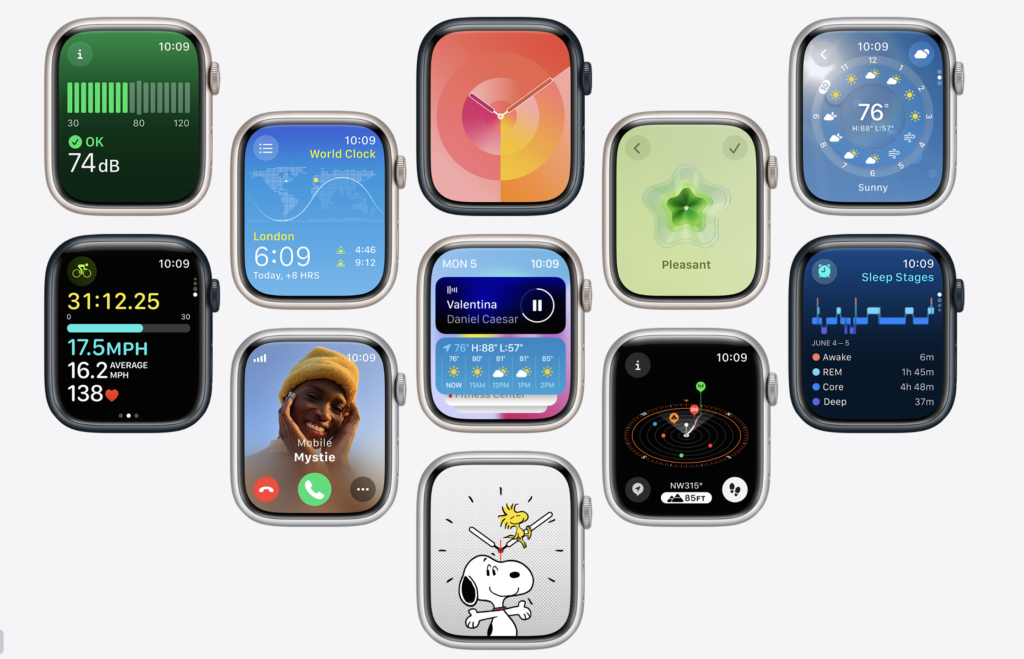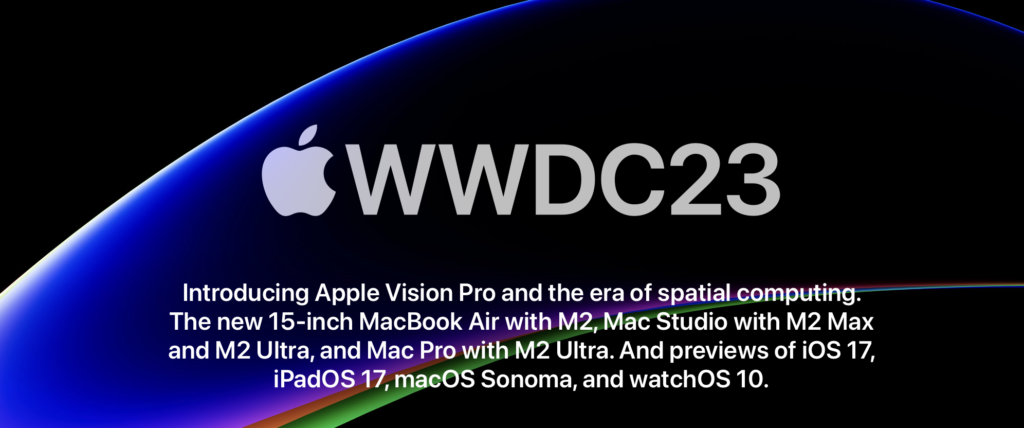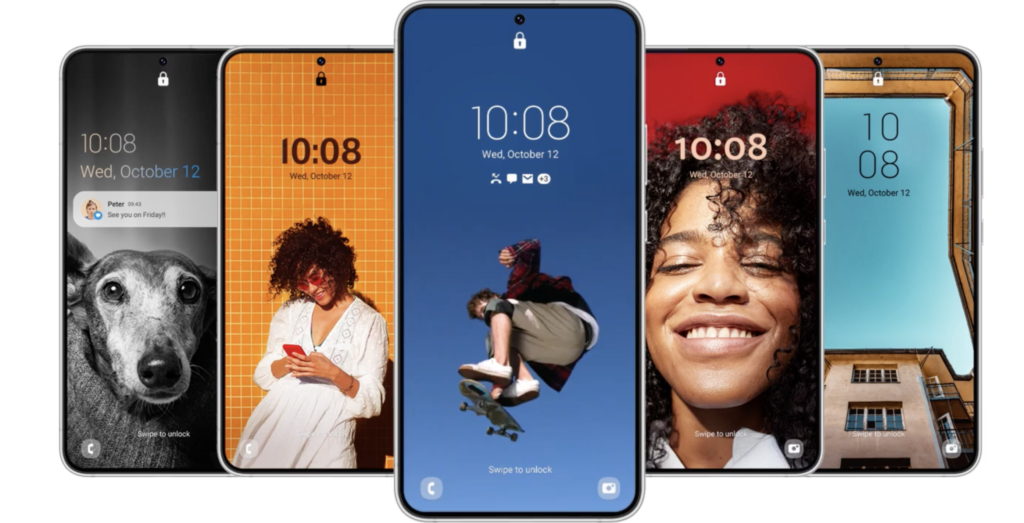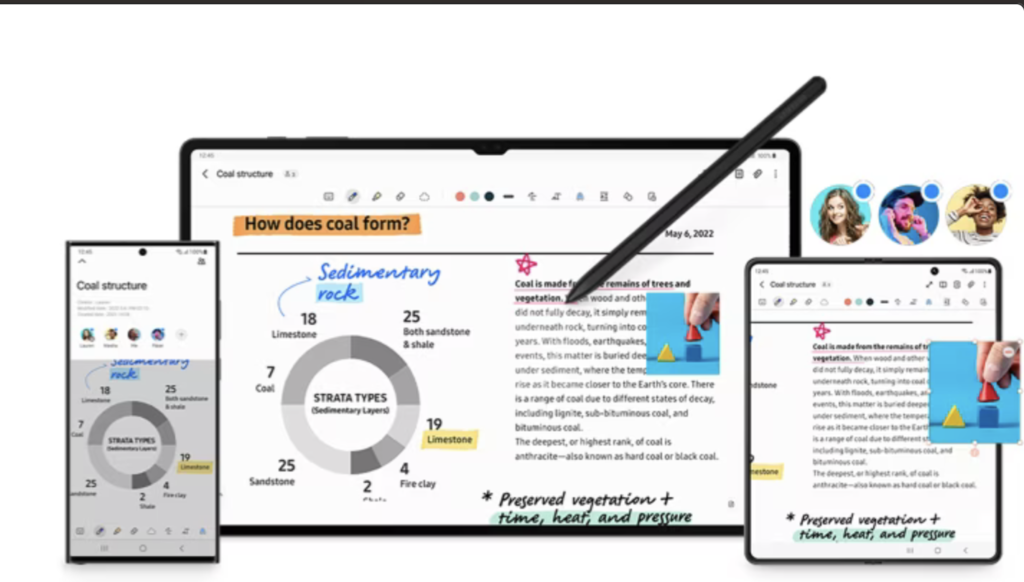Monday’s keynote at Apple’s Worldwide Developers Conference revealed the company’s new gadgets and software. WWDC usually unveils new iPhone, iPad, Apple Watch, and Mac software. Apple introduced new hardware this year.
The “new kind of computer”, Apple Vision Pro, was the major reveal. With MacBook Air and other Mac hardware launches, including new silicon, and software updates, Apple’s ecosystem was updated for 2023.
Apple Vision Pro, a spatial computer
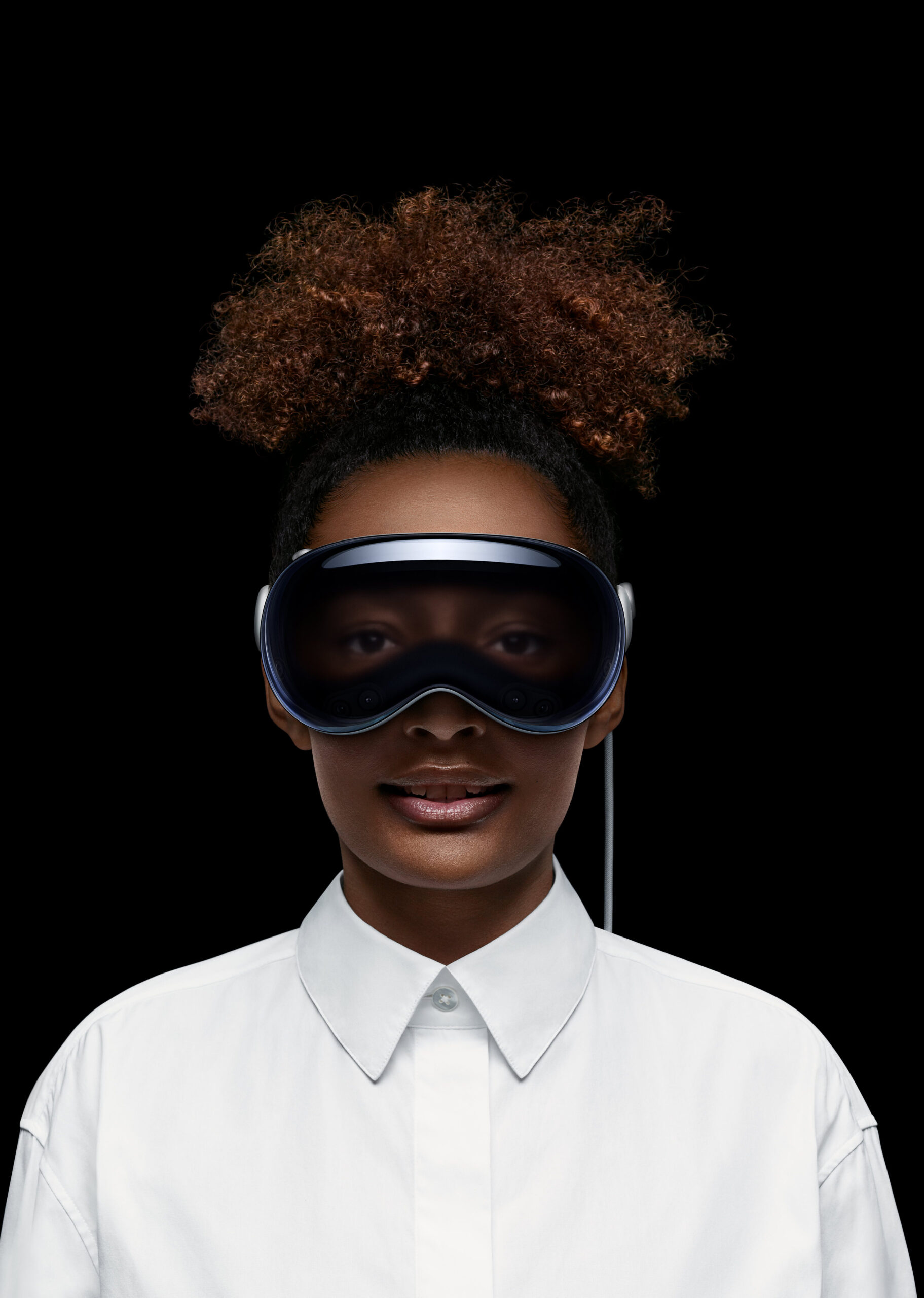
The Vision Pro is the AR/VR gear that Apple makes. It’s a personal device that you wear on your face. The user interface is designed by Apple, and the operating system is similar to iOS, MacOS, and TVOS. It costs a lot: The Apple Vision Pro will be available early next year for $3,499.
The spatial computer looks like others, but the glass front conceals cameras and a curved OLED display. The headset has a wide headband but no over-the-head strap. Instead, it has an external battery pack that links with a proprietary cable and fits in your pocket. On the right side, a big digital crown like the one on an Apple Watch controls the experience.
The Visual Pro has lenses that give it a 4K resolution, but you can switch out the lenses to get different visual effects. You put the audio pods over your ears, and “audio ray tracing” projects the sound to where you are. The bottom lidar and other instruments on the headset track how your hands and body move which is critical to control the headset.
The Vision Pro is a computer with an M2 chip, just like the high-end computers that Apple makes. But a new R1 chip takes sensory data from the headset’s 12 cameras, 5 sensors, and 6 speakers and sends it to the M2 to get rid of lag and show new images in 12 milliseconds. VisionOS powers the Vision Pro😏. Apple says that VisionOS is “the first operating system designed from the ground up for spatial computing.” It uses iOS frameworks, a 3D engine, foveated rendering, and many others. FaceTime and other video apps use cameras inside the headset to show how your face moves.
EyeSight utilises inside-pointing cameras and the headset’s outer display to show your eyes and what you’re looking at to keep users connected. Your eyes will disappear on the outside screen if you’re fully immersed. You’re still connected. The headset lets you see approaching people. This device will have a long learning curve and many users will need time to adjust to it, that is if they would be able to afford it in the first place.
Mac Studio with M2
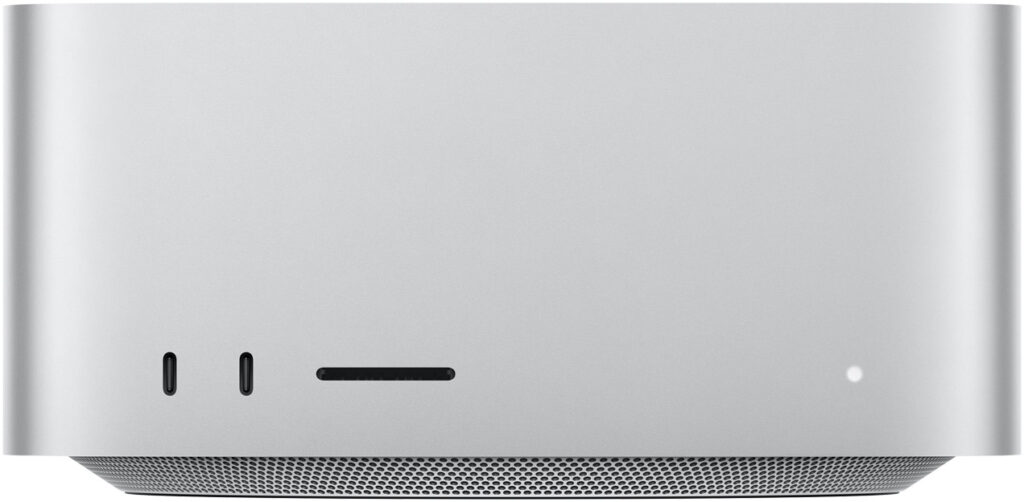
Apple’s latest processor powers the new Mac Studio. The updated model has an M2 Max or M2 Ultra chipset, which allows up to 192GB of memory, with a 24-core CPU and streaming 22 8K ProRes videos; the M2 Ultra stole the show. It can drive six Apple Pro Displays. The Mac Studio will start at $1,999.
New 15″ MacBook Air

An M2 chip powers the 18-hour MacBook Air 15, with configurations of up to 24GB of memory and 2TB of storage which price starts at $1,299 or $1,199 with a student discount.
The 11.5mm-thick, 3.3-pound 15-inch model boasts two Thunderbolt ports, a MagSafeable connector, and a 3.5mm headphone jack. It has the dreaded notch-mounted 1080p camera, three microphones, six speakers, and force-cancelling subwoofers.
Mac Pro with M2 Ultra
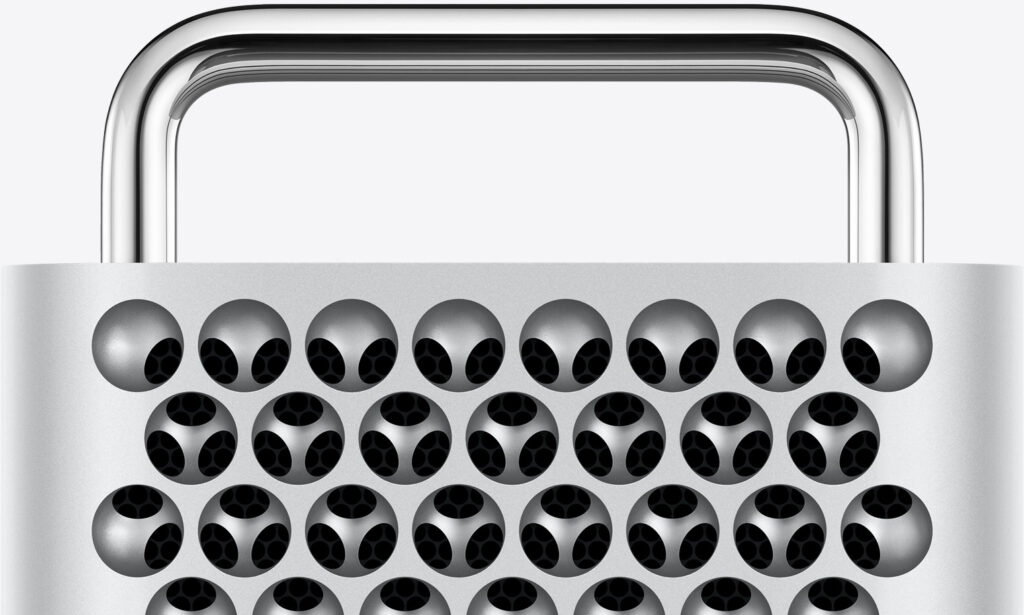
The new Mac Pro features up to 192GB of RAM and M2 Ultra Chips, as well as upgrades similar to the Mac Studio.
The Mac Pro contains six PCIe Gen 4 slots, eight Thunderbolt ports, two HDMI ports, and dual 10GB ethernet interfaces. The new Mac Pro features an upright tower and horizontal rack configurations.
Pricing for the new Mac Pro starts at $6,999.
iOS 17
iOS 17 has many quality-of-life changes. Finally, search Messages with more filters. You can reply to messages by swiping or pushing and holding, and voice notes will be transcribed.
No more grey displays when contacts call set full-screen images or Memoji to contacts. To screen unknown callers, you can watch voicemails transcribed in real-time.
Check-In, a new safety feature, notifies a trusted contact when you arrive safely, such as after late-night travel. Instead of calling, you’ll be asked to extend the timer if you’re late. It shares battery and signal status. End-to-end encrypted Check-In.
Last year, Apple released an iOS tool to copy photos and paste them as stickers. Now you can do the same with video to create GIFs to share with friends or respond to Messages. All emoji are now shareable stickers.
Name Drop lets you exchange your contact details via AirDrop. Choose to share email addresses, phone numbers, and more.
Stop using Notes to record your thoughts. Journal is a new private journal app. Apple calls it a thankfulness practice, but iOS automatically adds songs and workouts to your log.
Android users have been able to use Maps offline for years, but Apple Maps now has the same feature.
When charged horizontally, StandBy turns an iPhone into an alarm clock. It has a vast clockface, calendar, and music controls.
Finally, “Hey Siri” will no longer be necessary. “Siri” activates Siri.
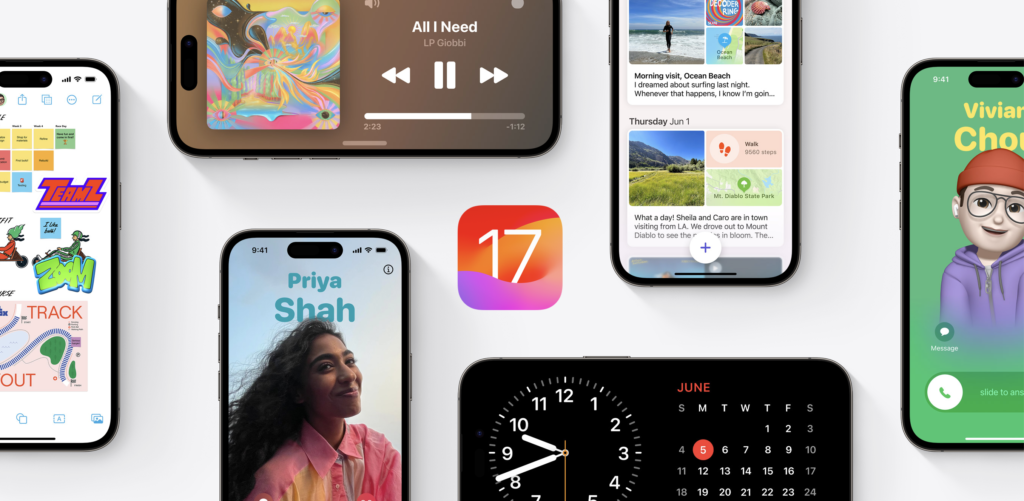
iPadOS 17
Widgets on iPadOS 17 show more information and have more interactive buttons to operate your smart home or play music. iPadOS 17 adds interactive sleep and activity visualisation to the Health app.
The upcoming iPadOS version adds lock screen personalization, multiple timers (useful while cooking), and Stage Manager improvements for iPad selfie cameras, which follows you during video conversations.
Apple made PDFs auto-fillable and signable in iPadOS with all the screen space. iPad users can edit PDFs in real-time and keep them in Notes.
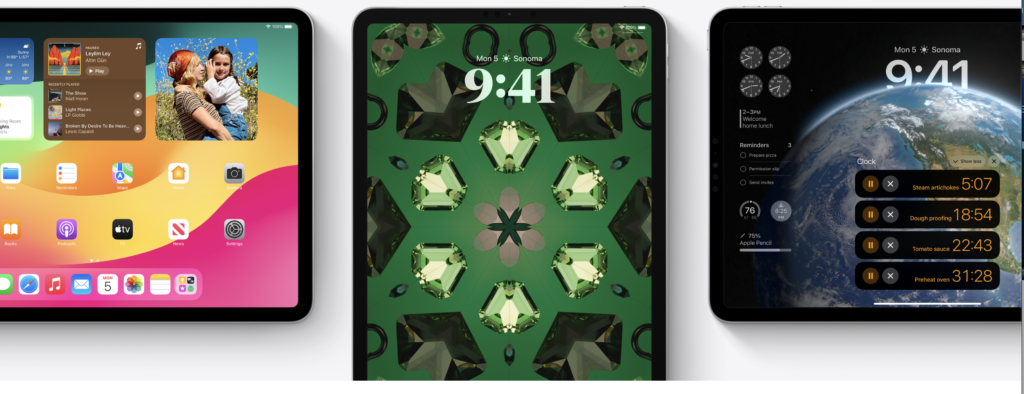
MacOS Sonoma
This trend of expanding widget capabilities into MacOS Sonoma, named after one of California’s most renowned wine-producing regions, was introduced at the Worldwide Developers Conference (WWDC).
A new gaming setting prioritises CPU and GPU to boost frame rate in Sonoma. Apple prioritises immersive wireless controllers, speakers, and headsets with low latency. Developers are also wooed with game dev kits and Metal 3. The most fantastic gaming news is Hideo Kojima’s Death Stranding coming to Macs later this year. “We are actively working to bring our future titles to Apple platforms,” Kojima remarked during the WWDC keynote.
Mac’s slide control overlay improves commercial videoconferencing.
PassKey, Apple’s end-to-end encrypted password chain solution announced last year, can now be shared with other contacts, and every one can edit and update shared passwords.
Updates to Safari’s security include the ability to lock the browser window while in private browsing mode and the use of profiles to keep business and personal accounts, logins, and cookies separate.

Watch OS 10
Widgets are the theme here as it appears on Watch OS 10. Also, the digital crown lets you scroll among widgets on your home screen.
This year, Apple has improved cycling workouts by presenting functional threshold data. It links to bike sensors via Bluetooth and has a new iPhone full-screen mode for cycling.
Hikers delight! Cellular connection waypoints in WatchOS 10’s compass advise where to travel and how far before carrier reception. The 3D compass view shows SOS waypoints and elevation. The topography is also lovely.
Apple is adding colour-coded emotional states to its Mindfulness app. If your Apple Watch isn’t nearby, you can use your iPhone.
